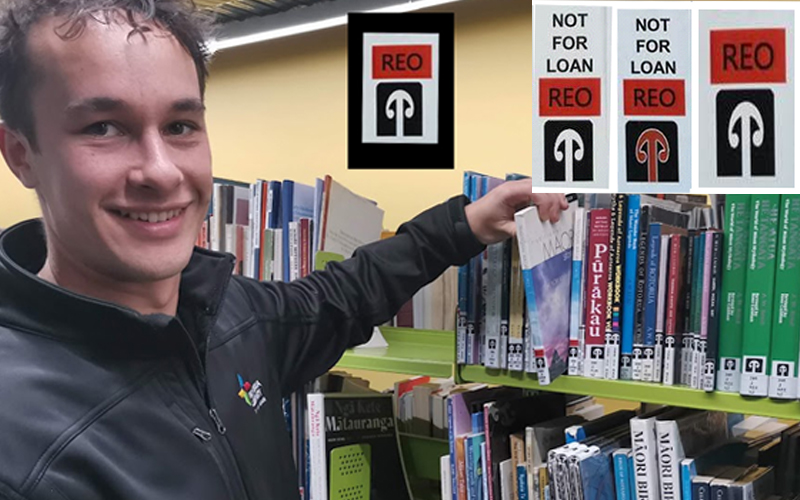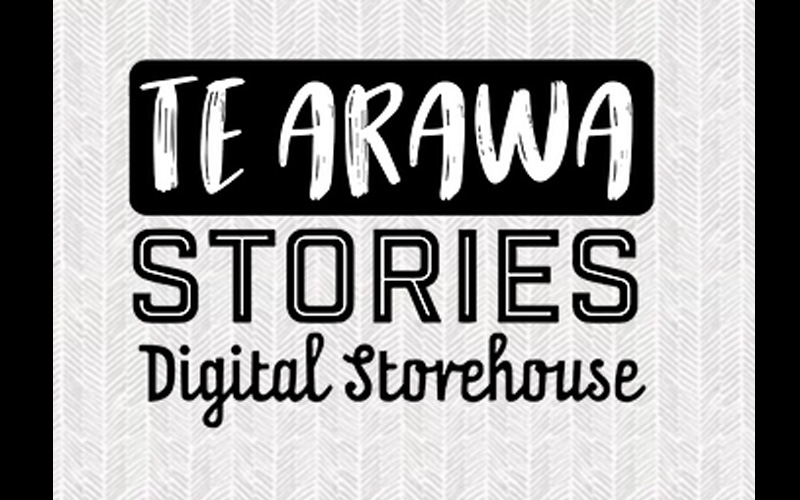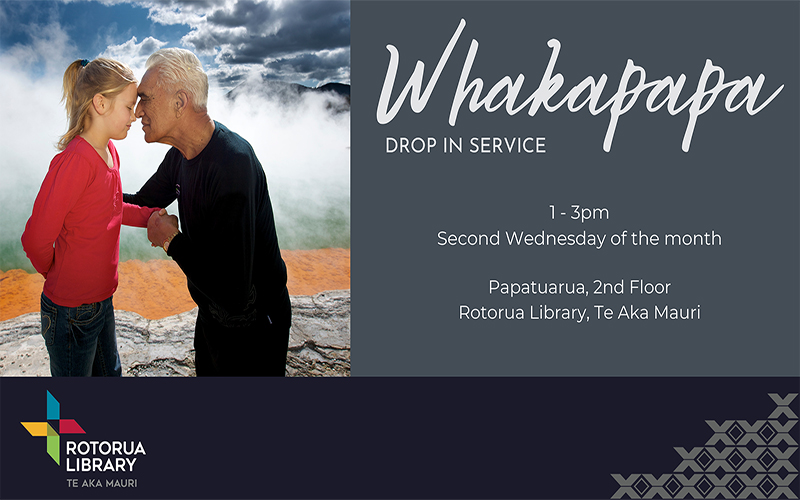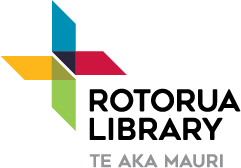Māori resources
Kohikohinga Māori/ Māori Collections
Te Kohikohinga Māori holds a wide range of historical and current information with significance to Te Arawa people. These resources are located in the Heritage and Research area. The ability to quickly search and locate these resources is essential. Through conversations with our users, we have become increasingly aware that there is room for improvement.
Kohikohinga Māori holds a variety of material for people wanting to learn the Māori language, these items include:
- Courses in Maori
- Dictionaries
- Grammar
We have developed this bilingual map of the Don Stafford Room collections to assist patrons to find what they are looking for.
Kōrero o Te Arawa
This list is an annotated bibliography about Te Arawa histories. The inventory gives:
- a brief summary of the author and content evaluation;
- it also describes what language the book involves.
This material is searchable on our website catalogue and can be located in the Children's, Teen, Adult Non-fiction and Māori collections.
Māori Land Court Minute Books [MLCMB]
The MCLMB are an important source of information covering subjects to do with:
- Māori history,
- geography,
- whakapapa and
- Iwi and hapū research purposes.
This material is located in the Heritage and Research area; please ask staff for any assistance.
Finding relevant information in the Māori Land Court Minute Books
The library is subscribed to the Māori Land Court Minute Books Index (MLCMBI); this database allows you to search keyword terms and find which minute books between 1865 and 1910 contain relevant references for your search.
Alternatively, there is a computer database in the Heritage and Research Area which can be used to search for references or the Auckland University Māori Land Court Minute Books Index.


Māori Language Resources
Māori is the foundation language of Aotearoa, the ancestral language of tangata whenua (indigenous people) and a taonga guaranteed protection under the Treaty of Waitangi.
The team at Te Aka Mauri have also been working on a project to improve access to our Te Reo Māori publications. Inspired by work already completed by our Youth and Early Learning Team, publications in our Māori Non-Fiction and Māori Heritage Collections – where 50% or more of the book is written in or translated into Te Reo Māori – are now being identified and labelled with the stickers shown in the photo.. The catalogue has also been amended to include “Māori” as a searchable language.


Great Te Arawa Stories
The Great Te Arawa Stories (GTAS) website contains a collection of stories about people, places and events that are applicable to Rotorua and to the people of Te Arawa. It was developed by Ngā Pūmanawa e Waru to introduce learners to Te Arawa stories, in order to encourage user education skills, support enquiry learning and inspire the exploration of existing resources. When the Trust scaled back its work, Rotorua Library, as part of Rotorua Lakes Council, was identified as the best custodian of this rich taonga.
Click on the image to engage with Te Arawa specific stories. There is also a sidebar link to the Great Te Arawa Stories website on each page.

Māori Magazines/ News Papers
Established primarily to service the Maori market, these publications are driven by tribal issues and concerns, and cover issues from a Maori perspective. The library holds copies of Te Ao Hou, Journal of the Polynesian Society, Mana, Te Karaka, Tu Mai, Kokiri Paetae & Niupepa Maori 1842-1932 (microfiche)
Te Rangikāheke Manuscripts
Wiremu Maihi Te Rangikāheke of Ngāti Rangiwewehi was Te Arawa’s earliest and most prolific writer of Māori lore and tradition. Born in 1815, he was educated by Rev. Thomas Chapman. He could read and write in Māori but was not known to be a speaker of English. He wrote 21 manuscripts and contributed to 17 others, many while living with Governor George Grey in Auckland, 1849 and 1853.
The Rotorua Library copies were gifted by the Ngāti Rangiwewehi tribe. Most of the material relates to information about reo Māori, pepeha, waiata, whakatauki, whakapapa, tikanga and karakia.
TAKOA Maps and Resources
Maps available on TAKOA are an important source of information. They cover Māori history, geography, iwi, hapu and marae and are useful for whakapapa and personal research purposes.
Te Rūma Whakapapa o Maria Erena/ The Mary Ellen Family History Room
Collections from the Mary Ellen Family History Room are situated in the Heritage and research area. This collection has material for lending and reference (not for loan). The collection holds:
- Birth, Deaths Microfiche 1913-1961
- Māori voters 1908, 1919, 1939/45
- Marriages Microfiche 1911-1954
- Turton’s Land Deeds of the North Island Microfilm
- Maori Land Court Minute Books 1865 - 1910


Whakapapa Drop In
Nau Mai, Haere mai!
He tangata waimaria koe mehemea he pukapuka whakapapa kai tō whānau.
Ko te whāinga matua o tēnei wāhanga o te pae tukutuku he āwhina i te hunga e rapu whakapapa ana.
Second Wednesday of each month 1pm - 3pm
The main goal of these sessions is to raise awareness for those who are seeking whakapapa and would like to know what research resources are available either online or in our Don Stafford Room. Level 2, Te Aka Mauri.
Waiata Mai
First Wednesday of each month 12.15pm - 1pm
Waiata Mai is a community-orientated session where everyone is welcome to come along and enjoy singing waiata. Held in the Community Pride Space on the ground floor, Waiata Mai is led by guitarist Clark Pirika and he is joined by Library and Council staff, weekly waiata attendees, members of the public and anyone who is keen to join in. All the words are on the big screen so come along and sing waiata with us!

